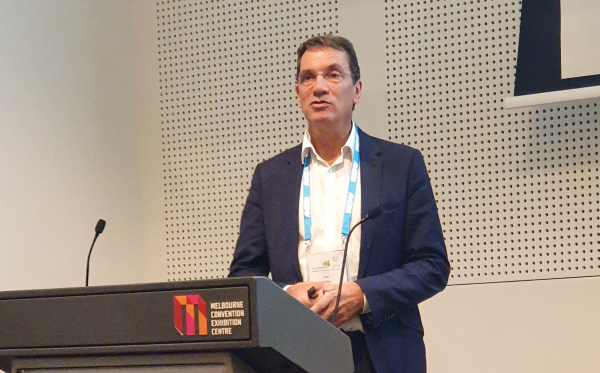The CEO of Sydney-based Pharmaxis (ASX:PXS), Gary Phillips, presented at AusBiotech's national conference in Melbourne yesterday to provide an update on the company’s anti‐fibrotic drug pipeline.
Mr Phillips used the presentation to outline the steps the company has taken with the goal of developing 'best in class status' for its Lysyl oxidase like 2 (LOXL2) inhibitors and strong pre‐clinical data in myelofibrosis for its pan‐LOX inhibitor PXS‐5505.
The company recently presented data detailing the assays that it says, for the first time, allow all of the LOX enzyme family to be measured in serum and tissue, even at very low levels.
"These data demonstrate that LOXL2 in particular has a relatively fast turnover in human serum and suggests that an effective drug will need to both penetrate fibrotic tissue and be present in concentrations high enough to inhibit LOXL2 at all times," said the company.
Mr Phillips said, “Whilst there are several excellent publications demonstrating the increase in LOXL2 enzyme levels in patients with fibrotic diseases of the lung, liver, kidney, heart, and some cancers, the importance of LOXL2 has been put in doubt by the failure of the one competitive LOXL2 inhibitor drug to have been trialled in patients; Gilead’s LOXL2 antibody simtuzumab.
"Gilead commented in the publication of its failed IPF study that their lack of an assay for LOXL2 inhibition limited their ability to confirm adequate target inhibition.
“The risk sensitivities of potential commercial partners for our LOXL2 inhibitor program were understandably heightened by the historic simtuzumab clinical failures but importantly, the work Pharmaxis has undertaken in assay sensitivity has provided very reassuring data.
"Over the course of this year, we have been able to reanalyse samples from existing studies and conduct new preclinical studies that have clearly shown the link between LOXL2 inhibition in diseased organs, a reduction in collagen crosslinking which is a hallmark of fibrosis and clinical effect as measured by the area of fibrosis. This data has energised the partnering process by underlining the relevance of LOXL2 and the superiority of our compounds.
"We are currently pursuing a number of different partnering options to enable this drug to commence phase 2 efficacy studies in patients with IPF or NASH.”
Pharmaxis also has two separate programs for inhibitors that block all enzymes in the LOX family (LOX, LOXL1‐4).
Mr Phillips continued, “We have been very encouraged by the feedback we have received from both academic and clinical thought leaders about the use of the Pharmaxis LOX inhibitor PXS‐5505 in patients with PMF as an adjunct to existing standard of care and as a monotherapy.
"We are pressing ahead with plans to complete the phase 1b study that started earlier this month, engage with the FDA and commence patient studies in H2 2020.”
